Creating a Change that Keeps on Giving
by Teryl Ford, Second/Third Grade Teacher, Van Horne Elementary School
One of our inquiries as teachers at our school is how to engage children in taking action in meaningful ways. Often what we do in school takes the form of charity — the adults in the school decide on a particular cause and a fund-raising strategy for how students will rasie money for that cause. The decisions are made by adults, and children have minimal, if any, understanding of the issues. They may know they are bringing cans of food from their parent’s cupboards because people need food, but they don’t know the causes of that hunger, nor do they feel any personal involvement with the people who are the focus of that effort. In fact, often these efforts reinforce steretypes of giving handouts to those who are “helpless.”
We worked at taking action in meaningful ways through a range of strategies. We wanted students to understand the root causes of the particular social problem, so that their action would reflect an understanding of why these problems exist and address those deeper issues. We also worked to collaborate with our students throughout the process in making decisions about taking action instead of imposing a particular fund-raising cause onto them. Another issue was sustainability and considering whether a contribution enables the person receiving that gift to take their own action and to sustain that action over time, for example, instead of only contributing a food box which is gone once it is consumed, helping a family plant a garden so they can grow their own food and take action for themselves.
Sustainability requires children to understand interdependence and the ways in which one action connects to other actions and leads to a range of consequences. Second and third grade students often find these interconnections between causes and consequences difficult to understand and so these connections became my focus.
Our school-wide inquiry on taking action was focused around tight times and hunger because of the economic crisis in our community and country during Spring 2009. We explored various causes for tight times and the different consequences of those tight times for families in relation to whether their needs or wants were being affected. We particularly focused on hunger and the reasons why families experience hunger, such as poverty, war, and the economy. In addition, we looked at food security and possible breakdowns in the system of how food goes from the farm to someone’s table. Throughout these studies, we made extensive use of different kinds of flow charts so that the kids could explore interconnections. The combination of flow charts and the focus on the system of growing and delivering food to the people who need it was significant in helping my students develop conceptual understandings about interconnections.
After seeing an educational movie, From Farm to Table, my students became aware of the importance of the system and the interconnectedness of how food gets from the farm to their table. They worked on flow charts to show all the steps that are taken for them to get the food they eat. In looking at the charts, I noticed that some skipped right from planting the food to selling it in the store, while others understood each of the smaller steps.
For most students, this experience helped them realize that one thing can lead to another and that a breakdown at any point can lead to hunger — a new understanding. They had never considered that hunger could come from reasons other than a person not having the money to buy food. They talked about reasons for why the chain might breakdown such as bad weather ruining the crops, mechanical problems in the factory, contamination of food, or transportation problems. Their list of factors that could lead to a breakdown included:
• Farmers don’t have enough money for seeds to grow food.
• Bad weather like hailstorms or too much water could ruin the crops.
• Truck could run out of gas or break down.
• Factory could break down or not be able to find workers.
• People could quit their jobs and go on strike.
• Food could rot or get germs.
• Gocery store could close because they can’t get good food.
They became aware that the farmers and field workers are part of the process and that they need the work to get money to feed their families. A breakdown in the system meant that the person waiting on the food at the end of the chain might have money but still not be able to get food and that that the person at the beginning of the chain might also be affected and go hungry. One example that intrigued students was a newspaper article about weather affecting the amount of coffee that was growing. As a consequence, some people were not able to get jobs because there was less coffee to harvest.


The students were astounded that all of these events started from the money Kojo borrowed to buy one hen. They noted that if someone had just given food to Kojo’s family, that gift would only have lasted for a meal and then they would have been hungry again. They could see that giving a goat or chicken provided a way for the family to make their whole lives better in many different ways. This book powerfully demonstrated the concept of sustainability in ways that my students understood and found compelling.
The book had such an impact that students wanted to take action to help a family like Kojo’s by giving an animal to make their lives better. They wanted to raise money so they could be part of these changes in people’s lives. They did not want to make just a one time difference, but a change that kept on giving.
Students researched agencies that provide a way for people to give money for animals and other needed items in various countries. They located several agencies through internet searches from a list of organizations in Finding Solutions to Hunger (Kempf, 2005). As teachers, we used this sourcebook for ideas of activities related to the causes of hunger and to locate innovative programs that focus on creating sustainable work.
My students were particularly interested in Kids 4 Kids, the Heifer Project International, and Save the Children, because they all had programs where they could purchase an animal that would have an on-going contribution. In addition, these programs teach the family how to care for the animal and use it effectively and efficiently. Students were adamant about providing an animal that would help a family take action to feed themselves and make their lives better. They were excited to learn that the animals given to the families are pregnant which enables the family to quickly be able to sell one of the babies and make more money.
As a class we brainstormed ideas on how they could raise the money. One idea that we had discussed as teachers was a World Map-a-thon because this fundraiser fit with our focus as a school on global inquiry. Students learned the names of countries and then collected pledges from family and friends based on the number of countries correctly identified during the Map-a-thon. My students studied but most were not interested, and when we did the test only a few students brought in pledges. I realized that the Map-a-thon did not work because it was my idea and most of the students didn’t buy into it. The project felt like homework and they had to ask for pledges from family and friends at a time when many families were feeling financial uncertainty.
We continued brainstorming ways to raise money for an animal and it became clear that they were interested in selling things as they named ideas ranging from having a lemonade stand to much larger items. The Student Council had previously sold Otter Pops at lunch and that had been popular and so we decided take on this project. Most of the students were really excited about being a part of this project. They were willing to do the work, even though some were shy about selling to other kids. They willingly gave up their play time at lunch in order to sell the otter pops. Soon, even the initially reluctant students were engaged and eager to be involved. They started selling more often and were excited about the money they were raising and the good they would do with that money.
Students wanted the animal they selected to keep on giving to that family and to other families and wanted to be sure that the families would be taught skills on how to care for the animals properly and to use them in their farming. They were consumed with deciding on the kind of animal to buy and considered rabbits, goats, chickens, geese, heifers, pigs, and water buffalo, as well as many more animals that were too expensive.
When the last day of school came around, we looked at all the choices and the amount of money we had raised and they decided on a water buffalo because it could be used to give milk and to produce babies to sell. In addition, the water buffalo would make it possible for rice farmers to do more work in their fields in less time, which meant they could grow more rice. They could also rent the buffalo out to other families to use in their rice fields, thus helping those families while providing extra income for the original family. Students felt that the water buffalo could contribute in a range of ways and so would make a bigger difference than some of the other animals.
In addition to the water buffalo, students decided to buy a flock of geese, a flock of chickens, and one flock of ducks because they could affect three other families that way. They could have purchased one other large animal but liked the idea of the smaller animals so they could reach more families. The geese, chickens, and ducks also had multiple uses — eat the eggs, hatch the eggs and sell the babies, or use the animals as protein.
Students were amazed that they would be able to change the lives of four families all because they sold Otter Pops for 25 cents. They told their families and others about their excitement on making a difference in someone’s life through giving an animal that would help that person or family take care of their own needs.
During the last week of school, students reflected on the meaning of taking action and each created a sketch to stretch on what taking action meant for them. Some students still saw taking action as charity and their sketches were about donating money or food to feed the homeless. It was clear that some still had a stereotype of the “helpless poor.” Others focused on taking action as raising money for an animal and for a gift that kept giving.
Linzie said that taking action means raising money by selling something like lemonade and then using that money to buy an animal for children. Kanai’s sketch reflected his belief that one person can make a difference. He said that one person can decide to help the world and that person’s action then affects lots of other people.
Skylar could not contain her sketch on just one side of her paper and drew multiple ways for action. She understood the many ways in which action might be evidenced, from giving money, blankets, or food directly to someone to raising money for an animal that allows that person to help themselves.
At the end of the year, every classroom in the school contributed an article for a school-wide newspaper on our inquiries across the school year. Lisa Thomas, our project coordinator, worked with students from each classroom, reviewing the year in terms of what the students had been learning and working on, and then asking them to choose one idea they saw as significant to write as a class article. I thought that the students would focus on issues of power and control. I knew that they had strong feelings about the decisions in their lives controlled by friends, parents, and teachers and the decisions where they had control. Instead, the students focused on the project to raise money for an animal and they wrote an article describing the project. The article ended with this statement, “We hope that what we donate will keep creating food for hungry people for a very long time.”
References
Kempf, S. (2005). Finding solutions to hunger. New York: World Hunger Year (distributed by Kids Can Make a Difference — http://www.kidscanmakeadifference.org).
McBrier, P. (2001). Beatrice’s goat. Ill. L. Lohstoeter. New York: Simon & Schuster.
Milway, K. (2008). One hen: How one small loan made a big difference. Ill. E. Gernandes. Toronto: Kids Can Press.
WOW Stories, Volume I, Issue 3 by Worlds of Words is licensed under a Creative Commons Attribution-NonCommercial-ShareAlike 4.0 International License.
Based on a work at https://wowlit.org/on-line-publications/stories/storiesi3/.

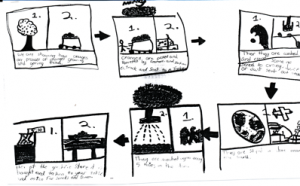
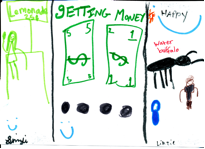
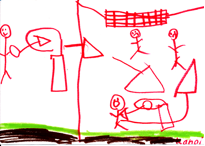
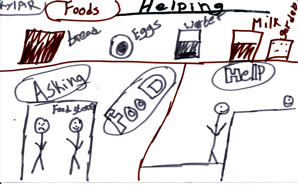
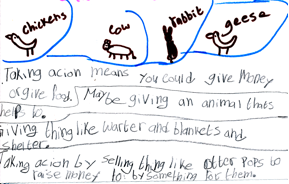
One thought on “WOW Stories: Connections from the Classroom”
Comments are closed.